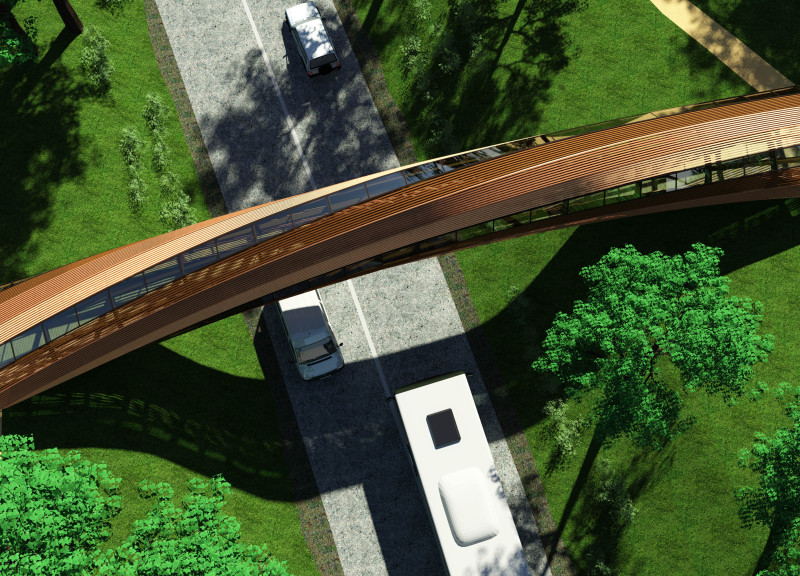5 key facts about this project
The footbridge at Gauja National Park serves as a connection for pedestrians while blending harmoniously with the surrounding landscape. This structure features an innovative design concept that prioritizes both function and user experience. Positioned within a scenic environment, the bridge enhances accessibility without disrupting the natural beauty of the park.
Design Concept
The bridge incorporates an oval frame design made up of thirteen sequential frames. Starting horizontally at the supports, the frames gradually rotate to a vertical position toward the center. This variation plays a crucial role in maintaining structural stability and managing the forces exerted on the bridge. The changing geometric shapes create a sense of movement, inviting pedestrians into a fluid interaction with the environment.
Structural Elements
In each frame, wooden beams interconnect, resulting in a strong yet lightweight structure. The outer part of each frame consists of 16 faces that twist around the main axis. As people walk across the bridge, these frames engage the eye, making the structure feel alive. Protecting users from rain and wind, two glass strips run along the top, allowing for views of the sky and trees while providing necessary shelter.
Canopy and Support
The canopy of the bridge arches gently, raising the lowest point to over 4.5 meters, which allows heavy vehicles to pass underneath. The height does not impede pedestrian flow, offering a spacious feel. Underneath, the support system includes reinforced concrete slabs that act as a grillage for reinforced concrete piles. This sturdy foundation is vital for long-term durability and stability.
Information and Engagement
At both ends of the footbridge, information boards inform visitors about the structure itself and the surrounding park information. These boards add an educational dimension to the experience, enhancing the connection between the bridge and its natural context. Users can navigate easily while engaging with both the architecture and the environment around them.
As visitors walk along the bridge, the interplay of light and shadows created by the design elements encourages exploration and reflection, highlighting the beauty of the landscape within Gauja National Park.






































